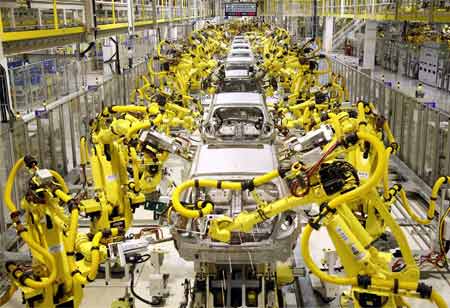THANK YOU FOR SUBSCRIBING
THANK YOU FOR SUBSCRIBING
Be first to read the latest tech news, Industry Leader's Insights, and CIO interviews of medium and large enterprises exclusively from Auto Tech Outlook

By
Auto Tech Outlook | Friday, February 07, 2020
Stay ahead of the industry with exclusive feature stories on the top companies, expert insights and the latest news delivered straight to your inbox. Subscribe today.
Robots are used in the automotive sector, but car makers are beginning to understand the importance of human workers when it comes to design and customization.
FREMONT, CA: A century ago, Ford Motor Company revolutionized the automotive sector by launching the world’s first moving assembly line. Along with revolutionizing the assembly line, it simplified it as well. The company was able to manufacture its famous Ford Model T from 12 hours to a whopping 90 minutes. Ford reduced the time, and the manpower required to build a car. Consequently, Henry Ford was able to reduce the price from 850 USD to a mere 300 USD. Eventually, the company was able to build a Model T every 24 seconds.
Today, automobile companies invest in robotic innovations to improve vehicle quality and production efficiencies. On top of that, organizations use robotic vision to create a digital model to determine the paint quality and imperfections on the surface by comparing them with perfect models. Automated robotic systems can perform tedious and lengthy processes on vehicle frames, chassis, underbodies, fenders, and interiors during the production. Previously, it was a time-consuming process, but today it can be easily by resetting a robot and reprogramming it according to the preferences.
Even Japanese companies are investing heavily in robotics. Honda has robots that can perform various tasks such as spot welding and painting on different vehicles, which increases production quality and boosts production. These robots keep human workforces out of harm’s way by performing risky jobs such as welding and painting, which generates toxic gases and fumes. Several reports suggest that various Japanese carmakers have achieved a high level of automation and manufacturing efficiency in the automotive sector. Experts have observed that Japanese firms have copied production techniques from the U.S. However, Japanese companies based in the U.S. have achieved the same or higher levels of productivity, flexibility, and quality against their U.S. competitors.
Several Japanese firms were interested in experimenting and creating new opportunities rather than copying their U.S counterparts. Toyota spearheaded such a project by not copying foreign models and focused on developing better and more efficient production lines specifically for the Japanese market.
When it comes to intricate designs, robots cannot match a human’s intelligence, especially when it comes to customization. Thus, Bavarian giant Mercedes-Benz is replacing robots with more capable human counterparts as robots cannot handle the complexity of the customization option of their flagship S-Class saloon. The company is moving away from robotics and investing and employing heavily on the human workforce. The company believes that robots cannot work with different options, and they fail to keep pace with the changes. Mercedes is not the only one to replace robots with humans; its competitors such as Audi and BMW are testing robots with sensors and intelligence systems that are safe to work with humans.
Today, Tesla is creating a competitive environment for traditional car manufacturers. Speed is critical in the modern car manufacturing sector, but still, a conventional vehicle takes seven years to hit production. Besides, there are numerous models, and customization is prevalent. Thus, mass production is not a productive option. Even though the majority of car manufacturers are pro robotics, a few of them understand human capability when it comes to production and design development.
See also: Top Automotive Technology Companies
 Copyright © 2025 AutoTech Outlook. All Rights Reserved | Privacy Policy | Subscribe | Sitemap | About us | Feedback Policy | Editorial Policy
Copyright © 2025 AutoTech Outlook. All Rights Reserved | Privacy Policy | Subscribe | Sitemap | About us | Feedback Policy | Editorial Policy 



